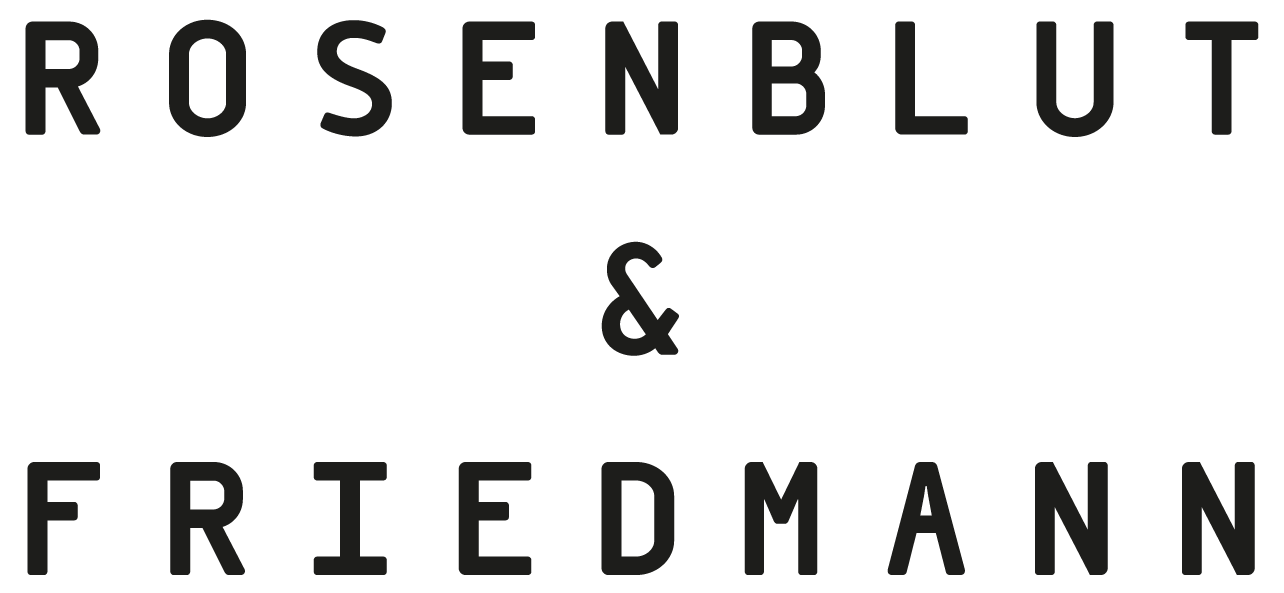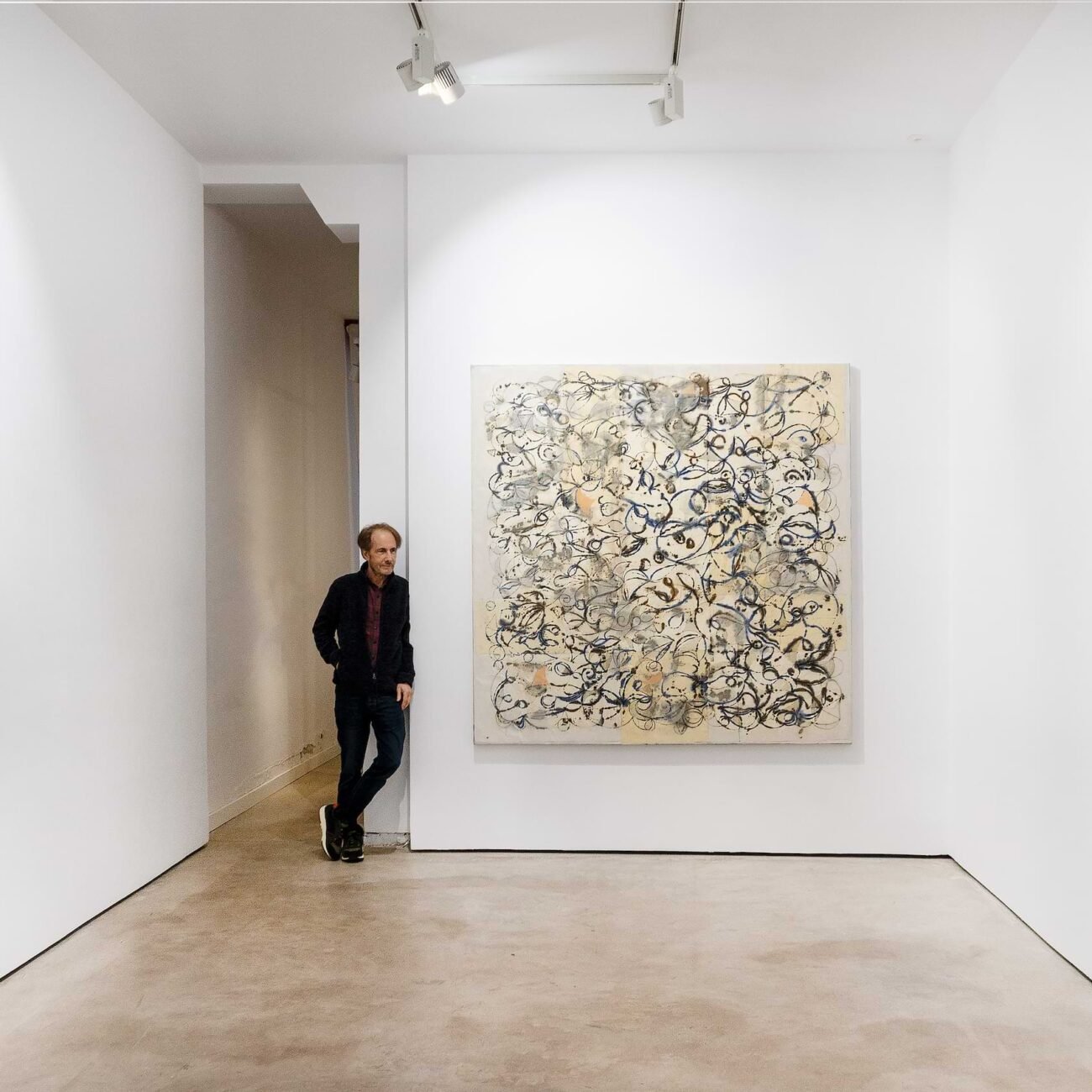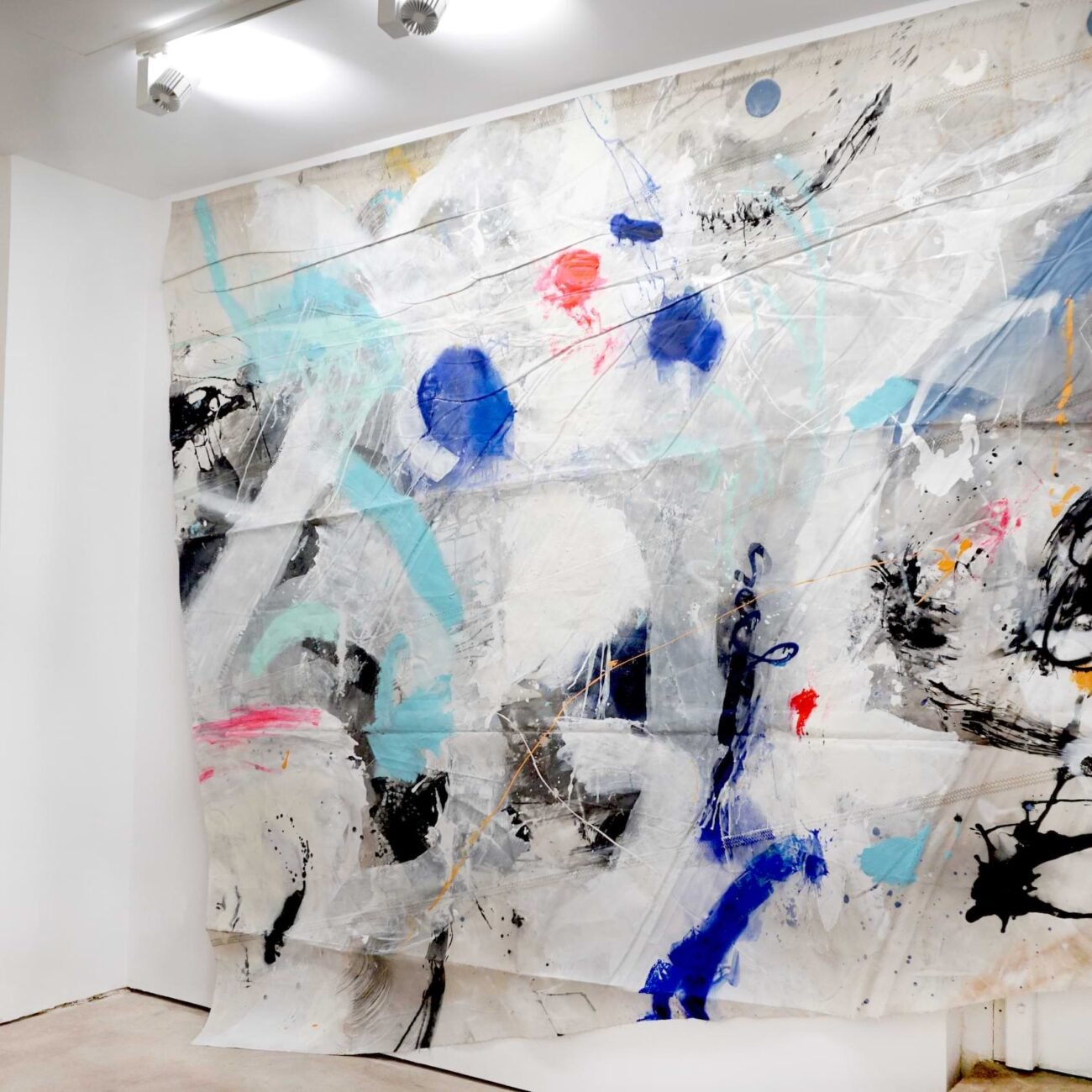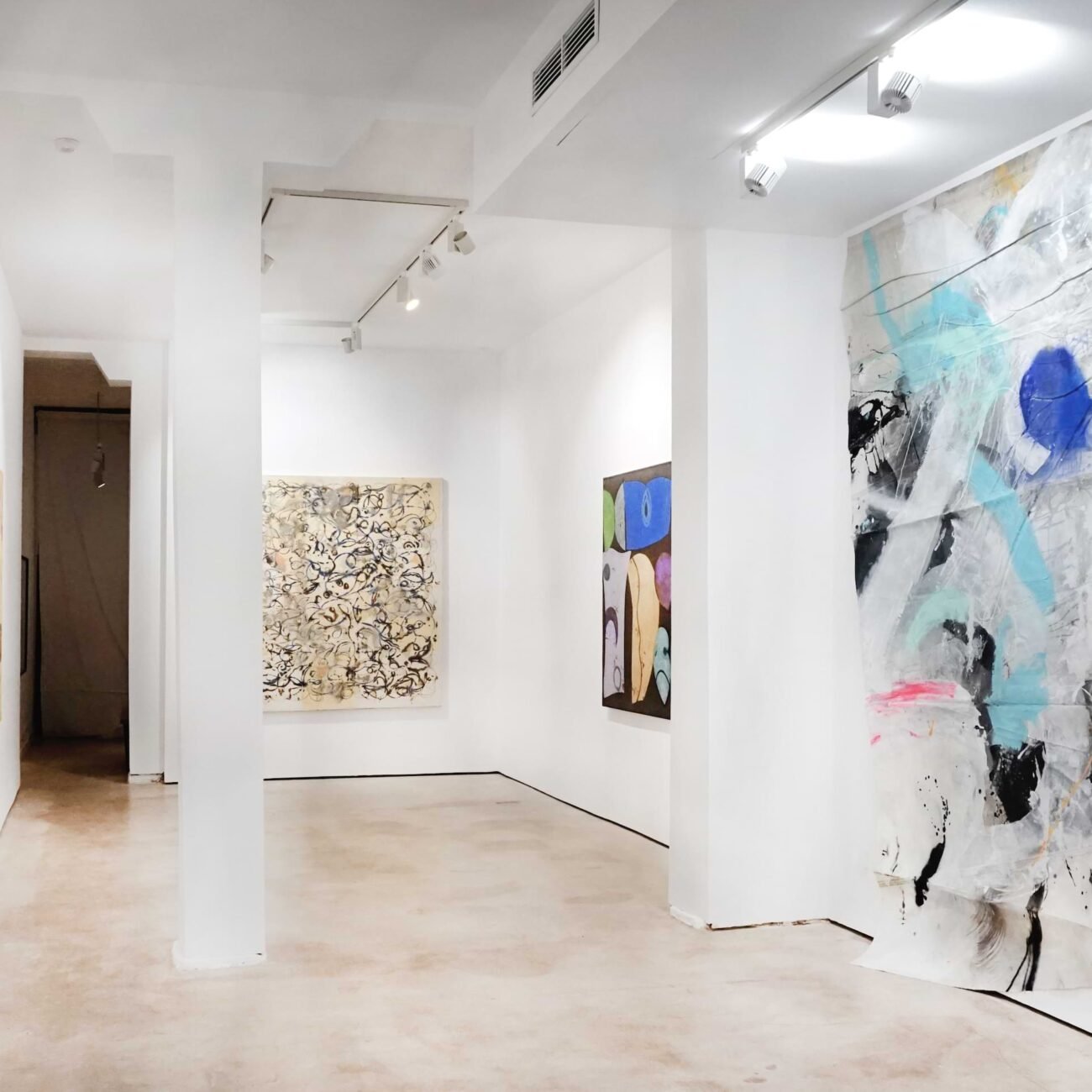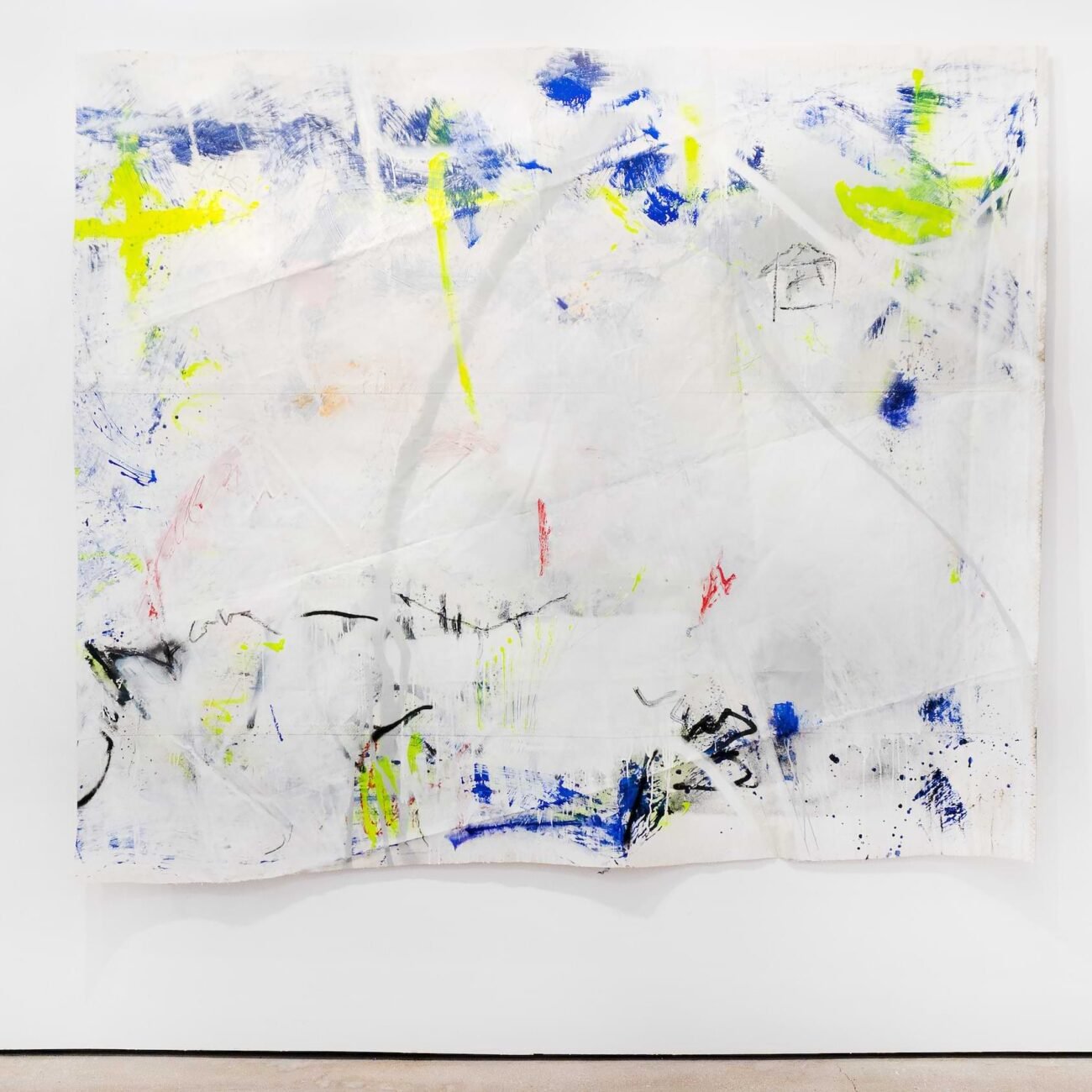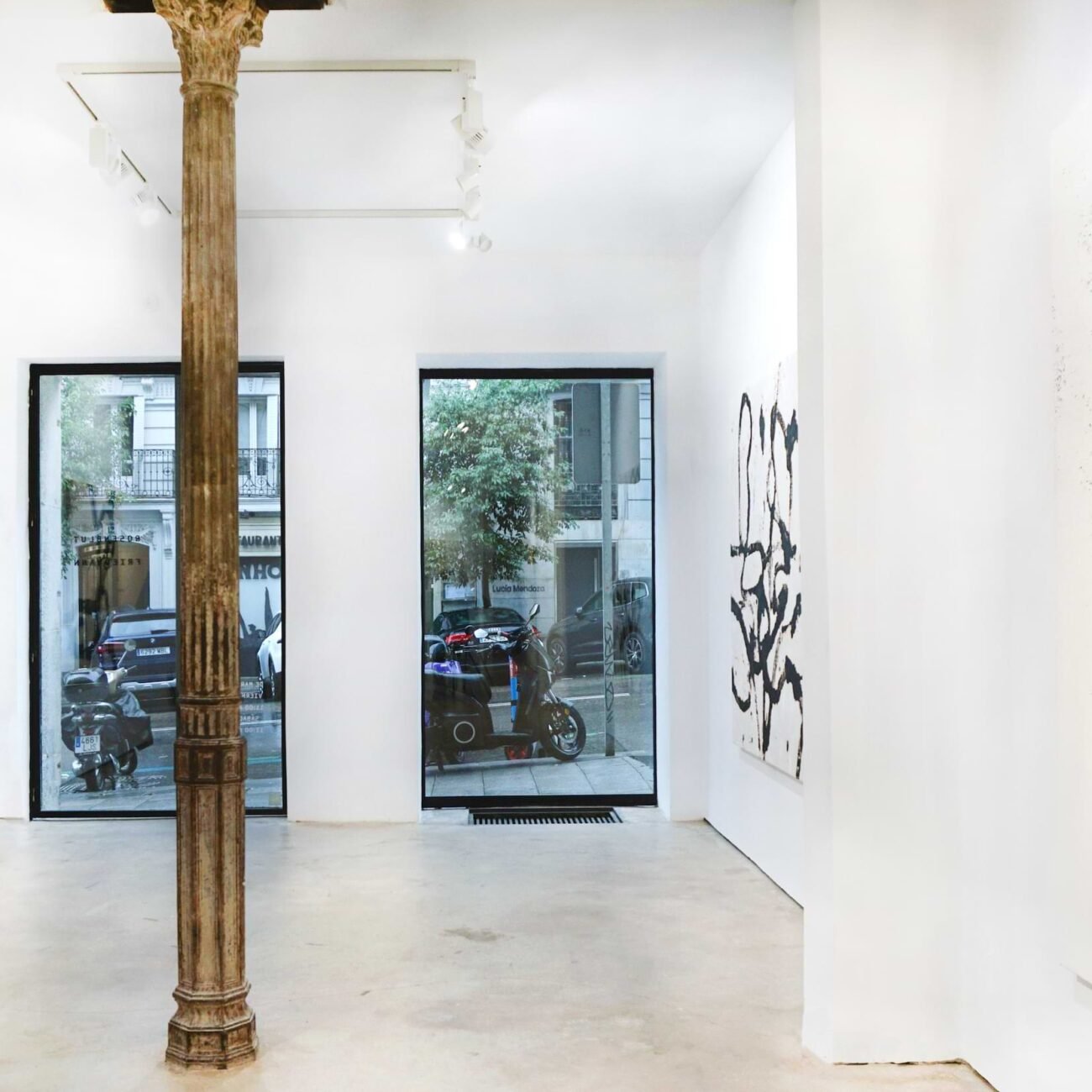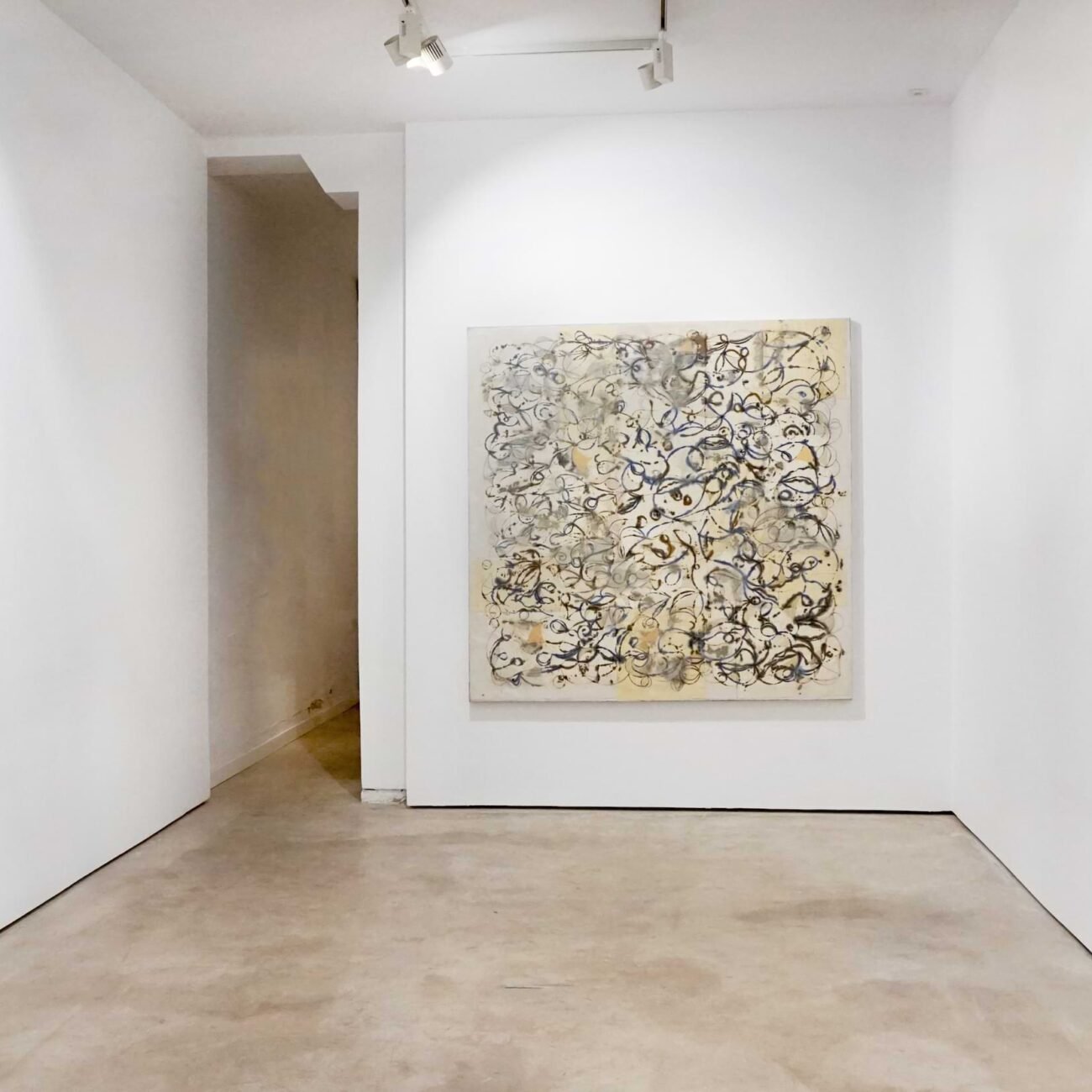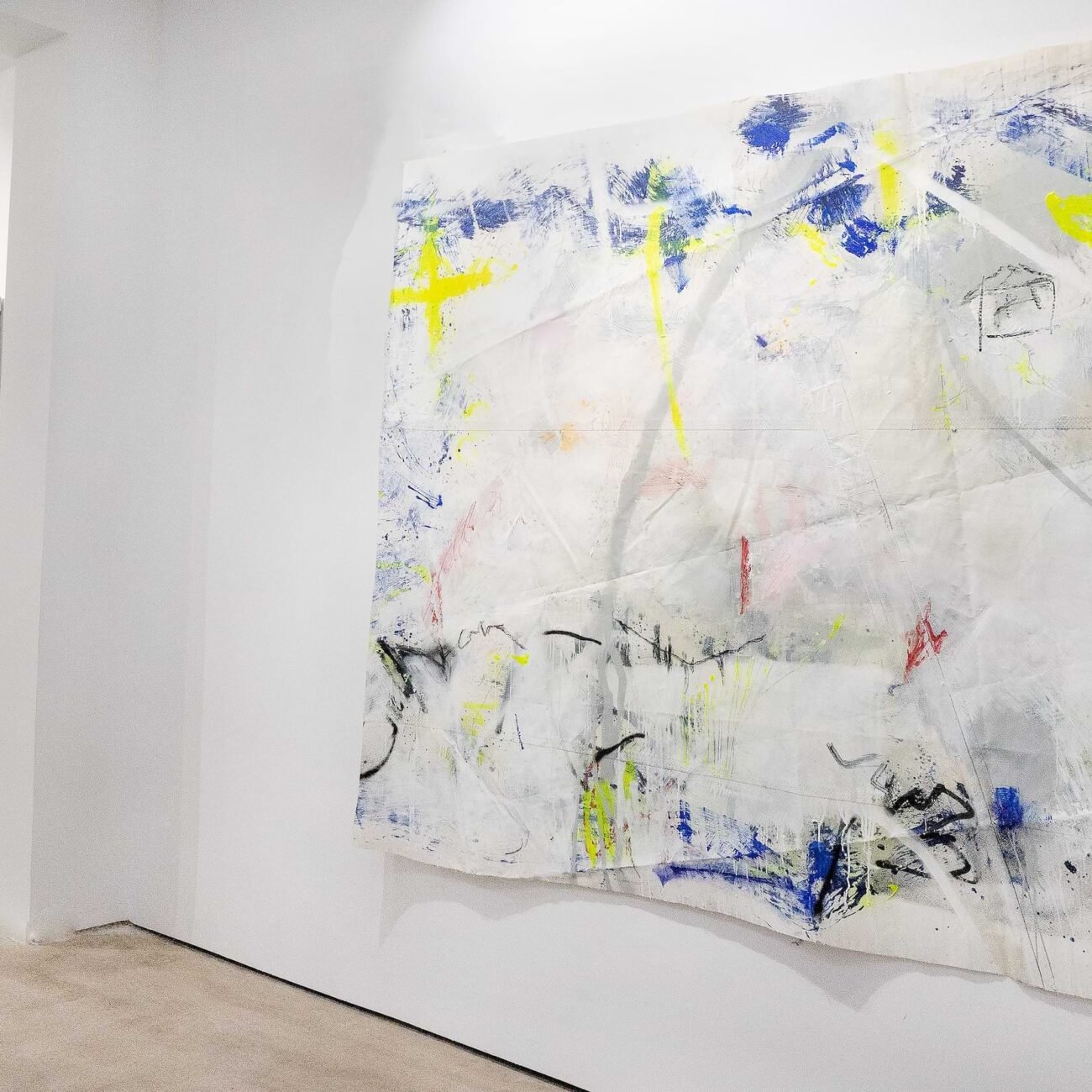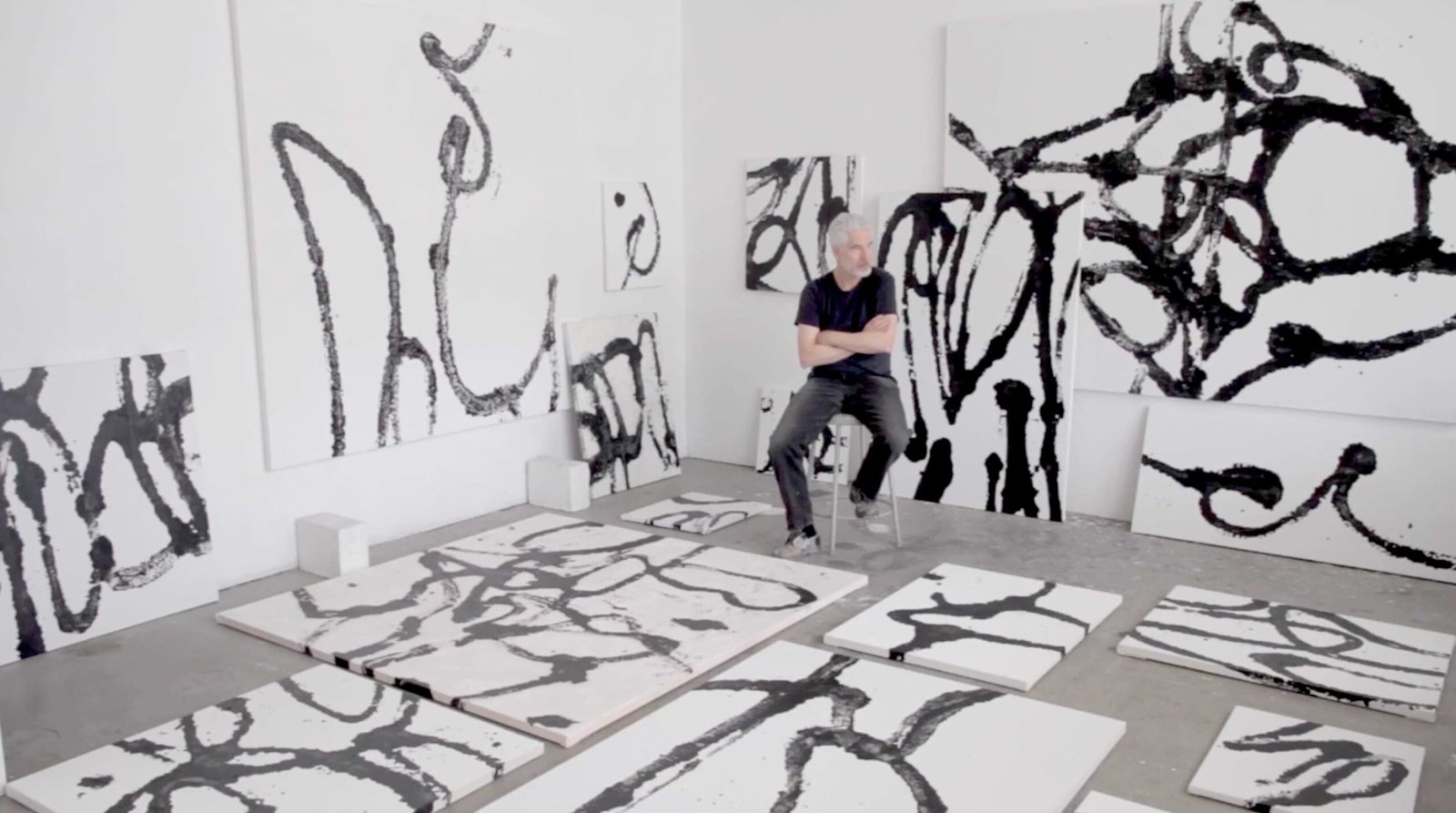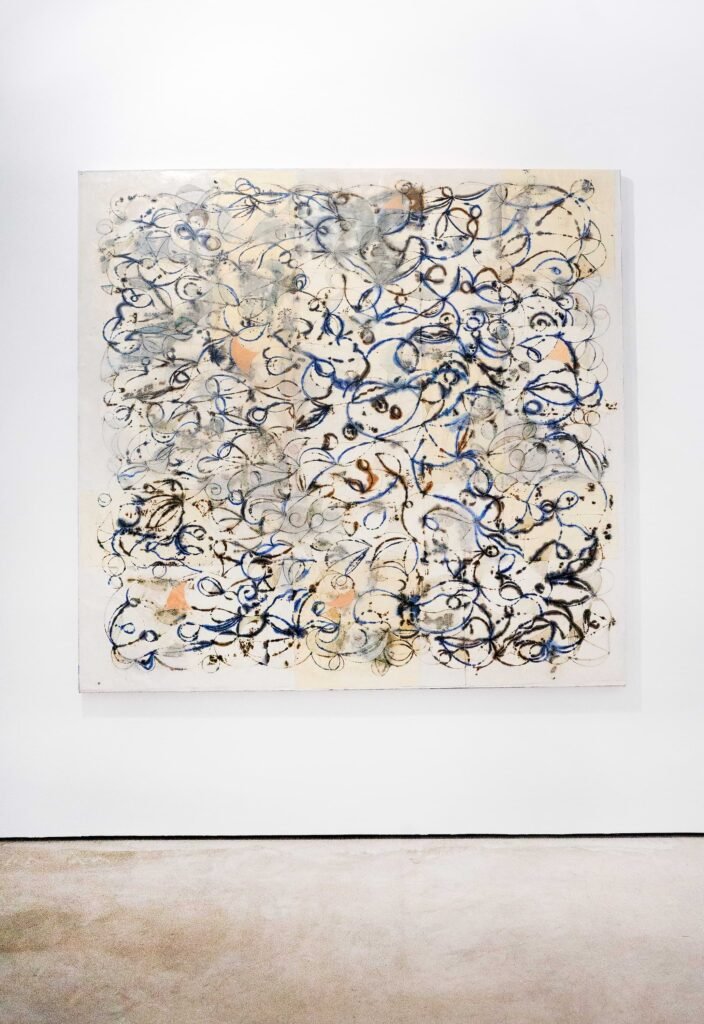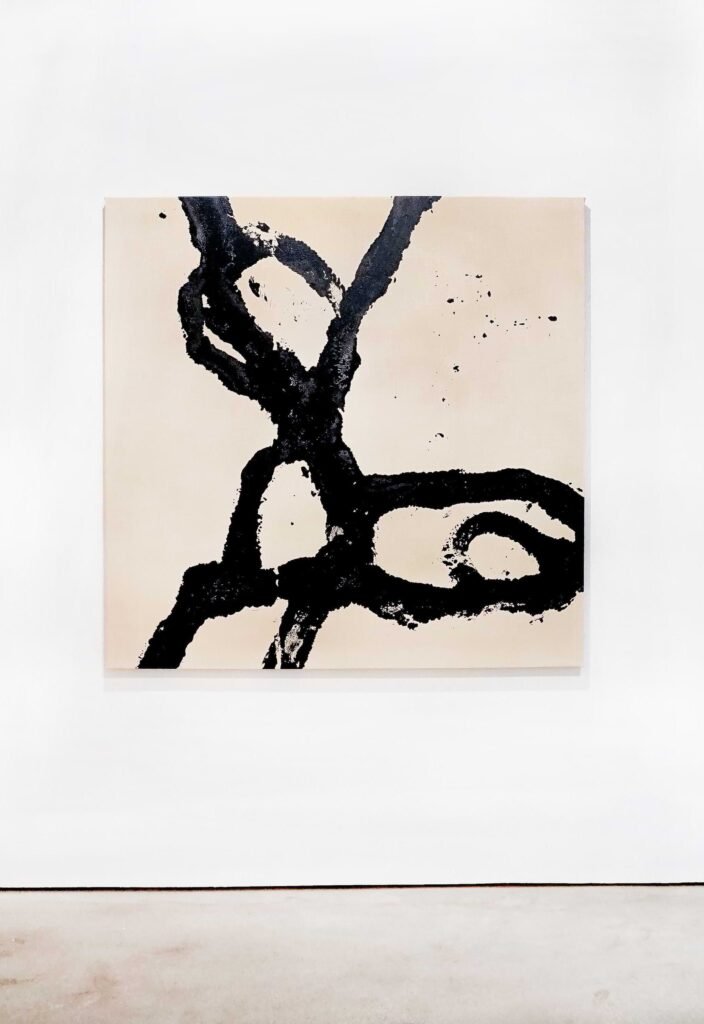Fine Cracks
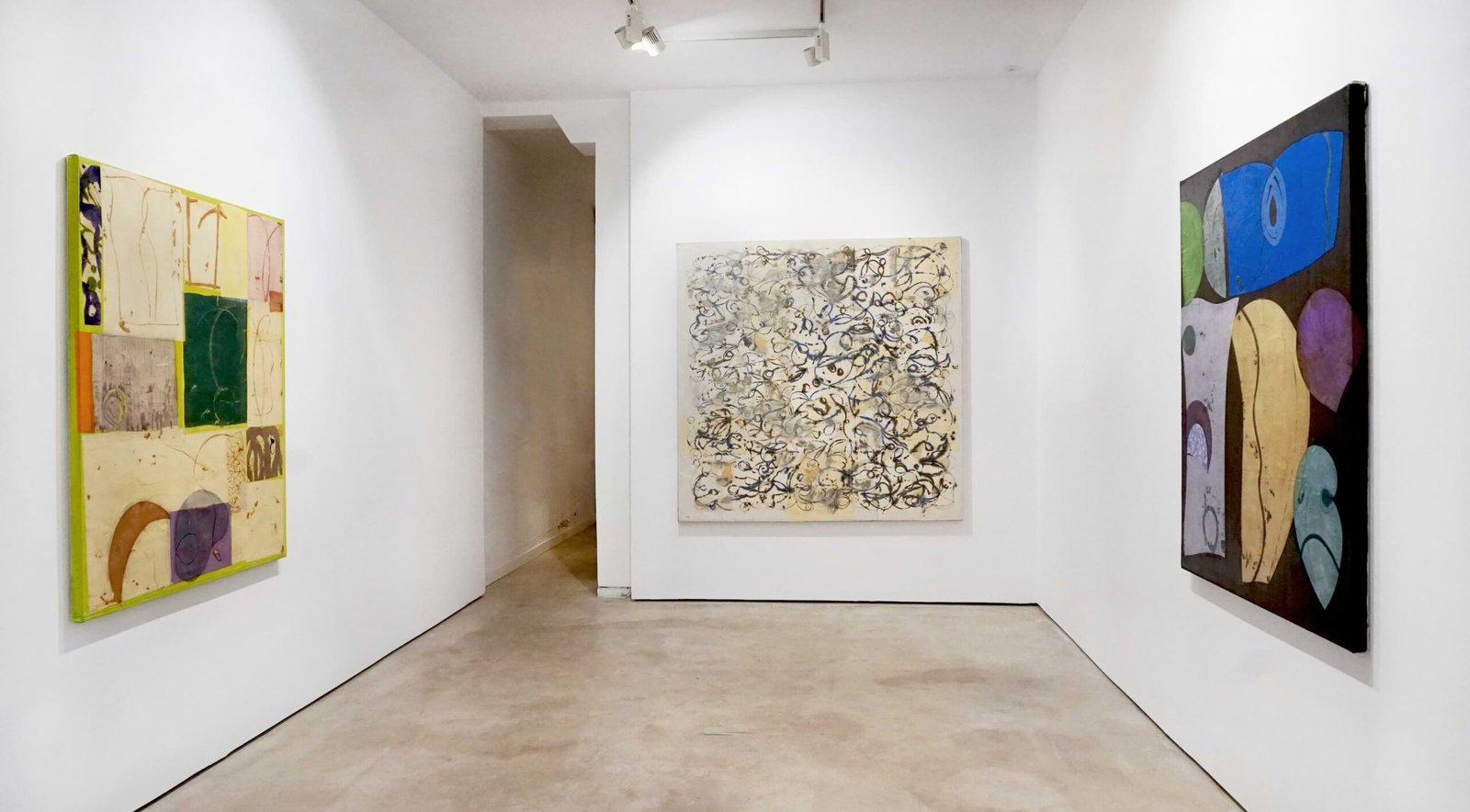
Location and Working Hours
Bárbara de Braganza 9, Madrid. Open daily 11:00-19:00 Monday and Sunday ClosedArtists
Michel Alexis, Paul Campbell y Alba EscayoFine Cracks: Miches Alexis, Paul Campbell y Alba Escayo
This is the third time that these artists exhibit their works together. Although they do not have a common style, nor are they a collective that follows specific rules to create, their works complement each other. The three share certain elements of abstract expressionism (like the attention to the materiality of the painting or the search for the unpredictable in creation), However, the way they paint and the works they produce are radically different and, even so, they work juntas. Campbell connects us with the earthly, with the impermanence of the present; Escayo projects us into space, towards an immensity traversed by vivid colors; and Alexis sinks into the underworld of the unconscious, to recover a past in permanent dissolution.
Paul Campbell
Paul Campbell, who lives and works in New York, began painting on the canvas, like any painter, until one day he took a wooden sphere, smeared it with paint and threw it on a slightly inclined canvas. The sphere went up and down the fabric, leaving traces of its journey, parables, curves that did not come from a human gesture. Then he began to explore different ways to intervene with the fabric without using his hand. His first exhibition in New York was called Remote Control, a series of paintings created with his children’s remote-controlled cars. Wheels slathered in paint produced unpredictable, mechanical patterns; then, with his hand, he sought to balance order and chaos.
In his latest series, Campbell has reproduced the tar scars left in repaired pavement cracks. First, he fills these scars with paint, then covers them with a cloth and drives his car over them. The result is minimalist and unbridled, the lines are thick, as if they were fragments of enormous calligraphy and, at the same time, they have a delicate harmony. Anyone who sees the works in this series will never see those tar scars the same way again. Like kintsugi, the Japanese art of repairing broken ceramic pieces with gold, these works enhance the beauty of the marks left by the passage of time.
Michel Alexis
For Michel Alexis, who lives and works in Paris, the intervention of the fabric is also a path of constant exploration, but in his works, Campbell’s minimalist abstractionism does not predominate, but rather one with dreamlike reminiscences, as if it were built from images of a pre-verbal past, before language gave shape to reality. As a child, Alexis would lie on his bed and stare at the ceiling of his bedroom, a white square adorned by an intricate frieze, and play with filling the empty spaces with baroque exuberance. “The basic structure of my paintings derives from that childhood ritual,” he confesses.
Alexis used to be a sculptor. Today he sculpts his canvases. First, he covers the fabric with an acrylic paste and then, with glue, he adheres rice paper to it, to which he makes fine wedge-shaped cuts through which he lets the liquid paint run, which expands into unpredictable spots. Alexis then removes the excess paint from the rice paper and repeats the process with another color. Little by little, various shades appear on the fine cracks. With a scalpel he continues to sculpt the fabric and remove pieces of rice paper, as if he were an archaeologist excavating a primitive language hidden in the canvas. The naked work is an organic, harmonious unit like an encapsulated image of childhood.
Alba Escayo
Alba Escayo, who lives and works in Madrid, also creates her works through a process of elimination, however, while Alexis covers the empty ceiling of her childhood, Escayo gets rid of the horror vacui of the baroque and gives a central role to space and silence. “I think of my art as the construction of a haiku,” she points out. In her creation process, as if she were writing one of those very brief poems, Escayo cuts the line, reduces the gesture, reduces the range of colors to the minimum that allows the representation of infinity. As in a haiku, her work seems to arise from a spontaneous epiphany.
Some time ago, Escayo wanted to make large-scale works and found a ship’s sail, a 25-meter-high triangle of canvas, with rust stains, sewn patches, cracks and wrinkles that exhibited its own history. Escayo cut pieces of different sizes to paint on them. The thickness of the canvas exceeds both dimensions and, as if it had life, it folds, modifying its shape according to the space in which it is located. “It’s more of a sculpture than a painting,” Escayo concludes and, curiously, despite the differences, we seem to be listening to Alexis talking about her own work.
By bringing these artists together in one space, we witness three paths of abstract art that come together, like magnets, by opposition. In Escayo’s works there are voids and colors, in Campbell’s there is void but no colors; and in Alexis’s there are colors but there is no emptiness. One of these paths is guided by the presence of space, another, by the passage of time, and the third, by the images of memory, as if they were three ingredients with which the human being is made.
Allan Meller, 2024.
